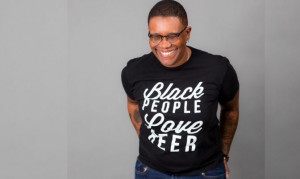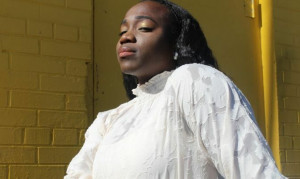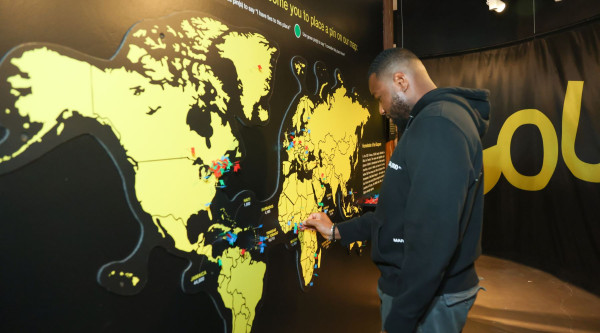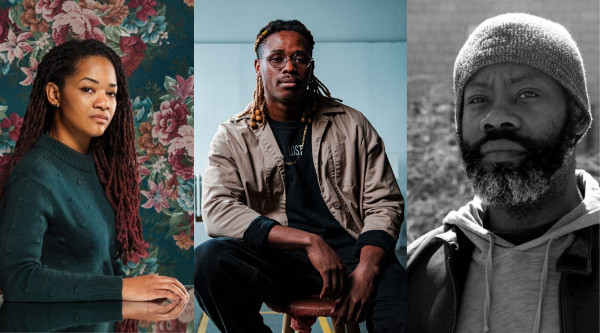His urban loft, which houses his collection, also falls under his careful curation and has caught the attention of a number of interior design publications. If you come from the perspective that history is happening all the time, then this must also include Black history; and Kenneth Montague is a person definitely in the midst of making history right now. I had the opportunity to discuss the influence of art on his life, his efforts to make art institutions more diverse, and why he believes Black love is Black history.
How did your parents, both Jamaican immigrants, connect you to your culture and the arts?
I feel very privileged to have had grown up in a house full of visual art, incredible music, and a large collection of books. My father was a teacher and my mother was a dietitian. They met as supply teachers in Jamaica and eventually emigrated to North America. My father moved to Windsor and got a job with the Windsor School Board after finding it extremely difficult to get a teaching job in Toronto. So we ended up in Windsor; this border town that was a mix of the Canadian and the American small town experience. Of course, my house was also a little bit Jamaican, so I had this tri-cultural experience which was really great. The only negative was sometimes feeling like I was an “island” growing up, because I was the only Black kid in the class. I found the cocoon of being in a household full of art, with parents who encouraged viewing art that celebrated Black culture, significant for me. My mother took my siblings and I on day trips to the Detroit Institute of Arts, the Art Gallery of Windsor or the Detroit Public Library. I was maybe 8 or 10 years old when she started doing that. We spent afternoons looking at art at the DIA while my dad was studying at grad school in Detroit doing his M.A. in education.
How were reflections of self portrayals in the art world at that time versus the popular culture of the day? And were the art galleries more reflective of relatable culture than television or magazines in the 70’s?
I grew up watching TV shows in the 70s like Sanford and Son and Good Times, which was the pervasive view of Black culture at the time, and very African-American. It occurred to me that the Black characters in these shows were usually buffoons, and I recognized very little of myself or my personal family life reflected in those shows. Contradictory to that, I would also see a James Van Der Zee photograph of a sophisticated Black couple on the walls of the Detroit Institute of the Arts. Something I didn't see reflected in TV, movies, or radio that I was growing up with. I recognized that there was another way that Black folks lived that wasn't really being fairly portrayed to me. I really glommed onto that early on. That was basically my introduction to art and seeing reflections of Black life that was a representation of who I was, or what I aspired to be, helped me shape my own identity. It took me a long time to appreciate that we have our own rich cultural stories to tell right here in Canada, and art and collecting pulled me into those stories. I started collecting Black early Canadian artists and wanted to tell those stories which became an important part of my art activity.
Galleries are, till this day, considered very White spaces by many marginalized/racialized communities. As someone working within an art institution, do you sense any legitimate interest from within the institutions to address that discrepancy?
The dearth of Black cultural presence in the institutions is my main purpose in getting involved with the AGO. I'm really trying to address that historical lack of diversity as a Trustee. It's encouraging that curator Julie Crooks came on board the AGO in the last couple of years and has already created some impressive shows, including the current exhibition, “Mickalene Thomas: Femmes Noires" which focuses on race, gender and identity in contemporary art. Many other curatorial and public programming initiatives are helping to make the gallery a more welcoming place for the communities that it serves.
Many of these communities you're talking about engaging with and bringing into the AGO like Jane Finch, Malvern, Flemingdon Park for instance; these are all places that are not necessarily in the downtown core. Some of the people from these areas may not even know who Mickalene Thomas is. So what is the outreach portion going to be like for those kinds of communities?
The challenge for me as the Chair of the Education and Community Engagement Committee at the AGO is to reach those communities that typically haven’t been engaged. There are a variety of ways in which we're currently addressing that issue. Some of it is through outreach and going into those communities, while another component is offering free visits to the AGO. If you go to the front desk at any Toronto Public Library, they will give you a pass to go to the AGO for free. The library has always been this great place where you can use a computer or board rooms for free, so we realized the library is a great place to start. We need to keep having events that pull people in on all levels. It's about meaningful marketing to the specific people that you want to reach. Once people get the introduction and have an experience that moves them personally, the gallery becomes a place that they’re proud to be a part of.
You opened Wedge Gallery then founded Wedge Curatorial Projects because you’ve said “storytelling was more satisfying than selling art.” What are examples of the kind of stories you are trying to tell?
It's all very organic how these things move forward, and it's now evolved to Wedge being two very distinct things in my mind. There’s the Wedge Collection, which is my privately owned art collection and is reflective of my personal taste. Sometimes I curate or organize art shows out of the collection; that is where I act in the role of a curator. Then there's Wedge Curatorial Projects, which is a non-profit arts organization that supports emerging Black Canadian artists. We produce shows, events, book launches and workshops. For Black History Month, I'm working with a young curator, Emilie Croning, who is featuring work by seven Black Canadian photographers in a month long exhibit at the Gladstone Hotel entitled “a love ethic”.The programming includes a Black Love Movie Night at Jackman Hall at the AGO, featuring Barry Jenkins’ rarely seen debut film, ‘Medicine for Melancholy’. The program also includes a conversation with Alexia Arthurs, who wrote a celebrated book of short stories last year called ‘How to Love a Jamaican’.
I see the show as a response to all of those Black History Month programs around struggle, protests, and achievement. I'm not against that, but it's time to think about Black History Month through a different lens. Black Love becomes a theme that could be as powerful as the protest. It's a silent protest which is about showing ordinary lives. That's kind of where I'm at.
Who are 3 of your favourite Black artists working today? What attracts you to each of their work(s)?
Ebony Patterson from Jamaica, Sandra Brewster from Toronto, and Dawit Petros who lives in America but was born in Eritrea and came to Canada as a refugee. There are many artists who I love, but I think that those three are emblematic of the rise of contemporary African artists in terms of their “local but global” message.
What do you think is driving the sudden interest in black art?
I'm not sure. Inherently, I think it speaks to the nature of the art market that's always looking for the next new thing. That's one part of it. They other part of it reflects an exotification of “the other”- especially for European and American collectors. I hope that this will eventually stop, and that these artists become a consistent part of the global art conversation.
We live in a social media age of smoke and mirrors. Apparently millennials, though widely connected, are experiencing depression and loneliness at high rates. How do you curate a genuine life for yourself, that actually makes you happy?
I do a lot of speaking engagements where I talk to young people in schools. I talk about careers. I'm asked sometimes to wear the hat of a dentist and talk about how I got into dental school. Sometimes I talk about art. More and more, I find myself saying “always choose happiness as the ultimate goal of everything that you do”. Not money, not prestige - but happiness. Not what your parents think you should do. Secondly, put down the phone and go and see the thing that you're reading about on Instagram. Go to the current Mickalene Thomas art exhibition at the AGO. You can learn about it on your phone but you've got to go and experience it yourself to truly have it change your way of seeing and thinking. Instagram may be enriching or educational in some sense, but it's not going to move you the way experiencing contemporary art will. Whether it's on the street or a gallery, that's where it's at.
Byron Armstrong is a freelance writer and lifelong Torontonian, raised in Jane-Finch and living downtown.
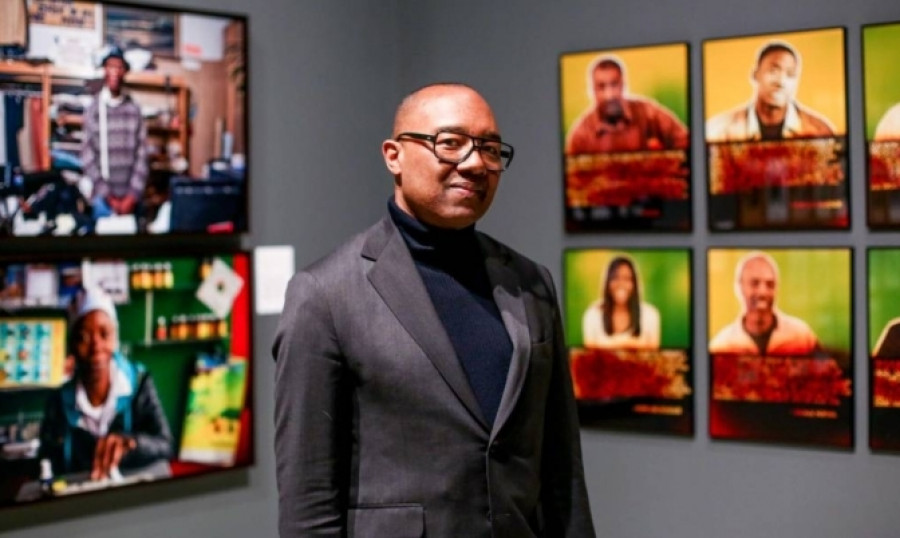
 By
By 




